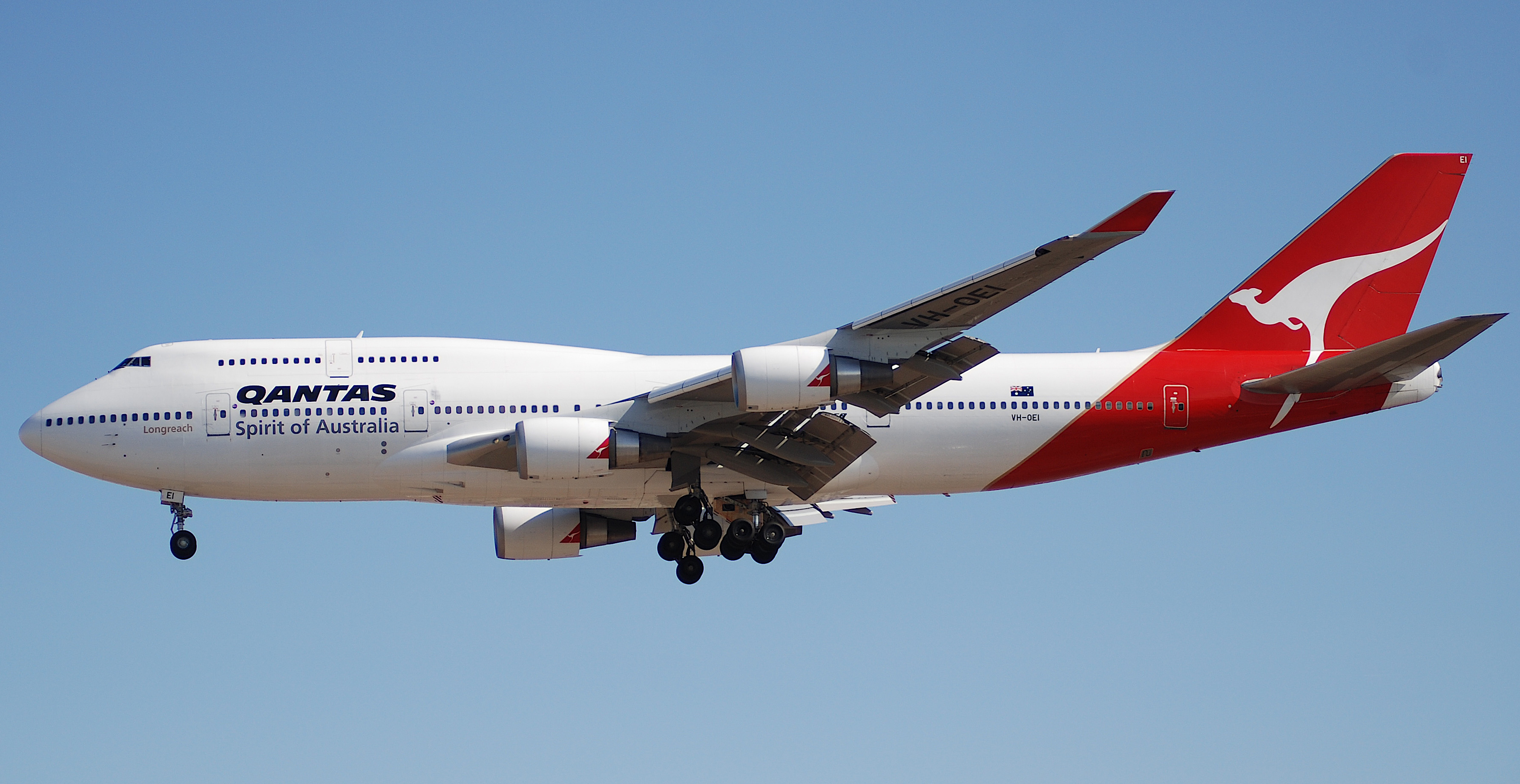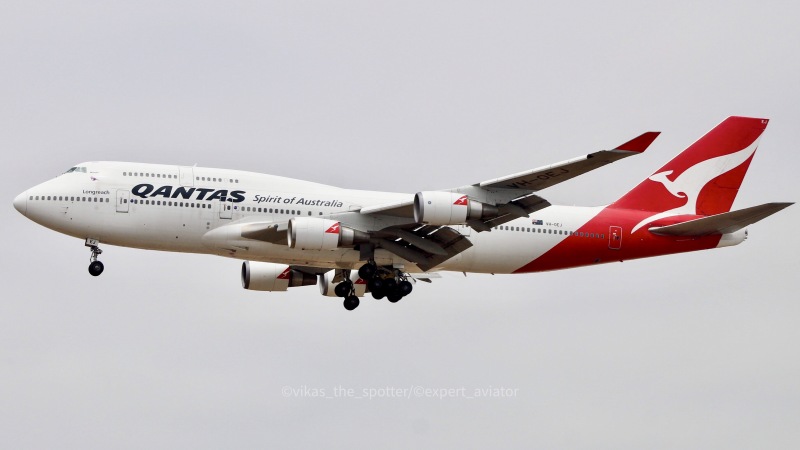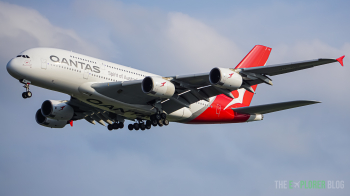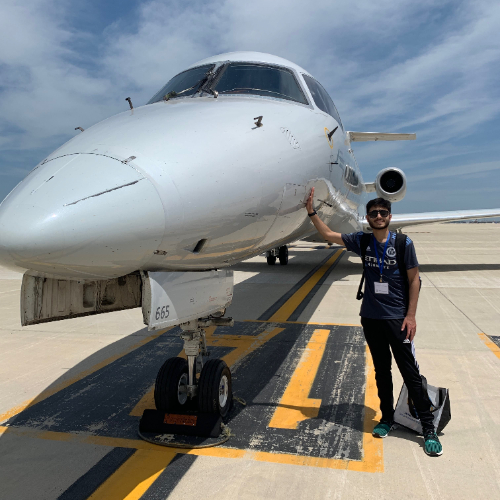Nonstop flights between Europe and Australia have been a growing popular topic recently. This is primarily with Qantas' Project Sunrise flights nearing launch.
However, you might not know that the first-ever nonstop flight between Europe and Australia was back in 1989, a delivery flight of a Qantas Boeing 747-400.
Making History
In 1989, Qantas was preparing to take delivery of its maiden Boeing 747-400. The aircraft was registered VH-OJA and named the "City of Canberra". It was the 11th 747-400 ever built.
Instead of flying the aircraft directly from its production site in Washington to Australia, the crew wanted to try something different. As such, its flight plan contained the words "RECORD BREAKING ATTEMPT", thus making its purpose rather clear.

On August 16th, 1989, four of Qantas' greatest aviators took charge of flying the 747 on this remarkable journey to bring it home. Captain David Massy-Greene was in command along with three 747 Senior Check Captains Ray Heiniger, Rob Greenop, and George Lindeman. Captain Chet Chester from Boeing was also onboard.
This special flight had been planned for a while and aside from the flight crew, onboard were two cabin crew and 16 passengers including senior Qantas managers, media, and engineers from Boeing and Rolls-Royce.
The plan was to fly nonstop from London Heathrow (LHR) to Sydney (SYD), a distance of 17,000 kilometers or over 10,561 miles. VH-OJA would be the first commercial aircraft to ever attempt a journey of this length.
Previously, the record for the world's longest nonstop commercial flight was 16,430 kilometers held by a Boeing 747SP. While this flight was going to be 17,000 kilometers, the 747-400's range was around 14,800. Not to worry, special steps had been taken to ensure this journey would be complete.
Longreach
To complete the full journey Down Under, the 747 was filled with special high-density fuel. Not only this but the plane was towed from the parking stand to the runway, ensuring that no fuel was unnecessarily burned during the taxi.
Furthermore, anything inside the plane that would add extra weight was removed. This included galley equipment. The route chosen for the flight took advantage of favorable winds, eliminating the possibility of diverting anywhere else before Sydney.

As VH-OJA was released from the tug right before the runway, the 747 was carrying just under 184 tons of fuel, more than double its total weight.
The 747 became airborne around 8:30 am local time. As reported by the pilots, the flying conditions were perfect. The aircraft used less fuel than anticipated. All seemed well until somewhere over the Indian Ocean when the crew received news that the weather in Sydney had worsened.
On departure from London, the report was that Sydney's weather was fine. However, over time, this report changed as the city was experiencing thunderstorms and low visibility.
A 30-minute holding requirement was being advised for all arrivals into Sydney. VH-OJA did not have enough fuel to hold, so the crew began assessing alternative options to make it to Australia. Adelaide and Melbourne had favorable weather.
Towards the end of the flight, the flight crew began hearing warning chimes and an indicator screen began showing "FUEL QTY LOW" as fewer than 900 kilograms remained in the tanks. Thankfully, it was just enough.
VH-OJA made contact with Earth at 2:20 pm Sydney time, 20 hours and nine minutes after getting airborne from British soil.

This amazing feat showed just how much smaller aviation was making the world. It was partly because of this milestone that Qantas named its 747-400 fleet "Longreach".
Around 30 years later, Qantas made nonstop passenger service between Europe and Australia a reality with service between London Heathrow and Perth launching on the Boeing 787-9.
Now, Qantas aspires to connect Australia nonstop to New York in the United States and other cities in Europe. With the Airbus A350-1000 on the way into its fleet soon, Project Sunrise is aiming to take Australia's national carrier to new heights.
As for VH-OJA, the aircraft continued to fly for Qantas for several years before being retired in 2015. Instead of facing the scrapper, the "City of Canberra" was preserved at the HARS Aviation Museum in Wollongong. A true historical artifact preserved for future generations to marvel at.
Comments (1)
 Paul Sheehan
This article is about a flight of a QANTAS B747-400. Why is it headlined by a photo of an Airbus A380 which is nor mentioned in this post. When I see this sort of thing happening it completely destroys my trust in your reporting.
Paul Sheehan
This article is about a flight of a QANTAS B747-400. Why is it headlined by a photo of an Airbus A380 which is nor mentioned in this post. When I see this sort of thing happening it completely destroys my trust in your reporting.
Add Your Comment
SHARE
TAGS
INFORMATIONAL qantas 747longreachlongest 747 flightqantas london to sydneyqantas londonqantas 747 londonRECENTLY PUBLISHED
 Learjet Owned By Vince Neil Crashes Into Gulfstream Jet, 1 Fatality Confirmed
On February 10th, around 14:30 local time, a Learjet private jet aircraft crashed into another private jet after landing at Scottsdale Airport (SCF) in Arizona.
NEWS
READ MORE »
Learjet Owned By Vince Neil Crashes Into Gulfstream Jet, 1 Fatality Confirmed
On February 10th, around 14:30 local time, a Learjet private jet aircraft crashed into another private jet after landing at Scottsdale Airport (SCF) in Arizona.
NEWS
READ MORE »
 Seattle Plane Strike 2025: Japan Airlines and Delta Collision Raises Safety Concerns
Seattle-Tacoma International Airport saw a concerning incident on Wednesday morning when a Japan Airlines (JAL) plane clipped a parked Delta Air Lines jet while taxiing. Thankfully, no one was injured, but passengers described the collision as a frightening experience.
NEWS
READ MORE »
Seattle Plane Strike 2025: Japan Airlines and Delta Collision Raises Safety Concerns
Seattle-Tacoma International Airport saw a concerning incident on Wednesday morning when a Japan Airlines (JAL) plane clipped a parked Delta Air Lines jet while taxiing. Thankfully, no one was injured, but passengers described the collision as a frightening experience.
NEWS
READ MORE »
 Ethiopian Airlines Expands Cargo Fleet with New Boeing 777 Freighter
Ethiopian Airlines has expanded its cargo fleet with a brand-new Boeing 777 Freighter, registered as ET-BAB (MSN 68140). The aircraft was delivered directly from Boeing’s factory in Everett, Washington, USA, and landed at Addis Ababa Bole International Airport at 3:41 PM (GMT+3) on Wednesday, January 22, 2025.
NEWS
READ MORE »
Ethiopian Airlines Expands Cargo Fleet with New Boeing 777 Freighter
Ethiopian Airlines has expanded its cargo fleet with a brand-new Boeing 777 Freighter, registered as ET-BAB (MSN 68140). The aircraft was delivered directly from Boeing’s factory in Everett, Washington, USA, and landed at Addis Ababa Bole International Airport at 3:41 PM (GMT+3) on Wednesday, January 22, 2025.
NEWS
READ MORE »





